How is sakiori relevant to us today?
The frugal tradition of sakiori weaving is relevant in today’s world. Sakiori is about more than the simple ‘reduce, re-use, recycle’ message we constantly receive, and that has given birth to many a pair of earrings made from old soda cans or a young person wearing a mechanic’s old shirt to school (with “Bob” still embroidered on the chest). There are people who wish to make a statement with their green ethics, and those items serve that purpose well. However, to succeed as a societal movement, green also has to be conventional. It has to appeal, not just to a do-good philosophy, but to the aesthetics of modern consumers. The Japanese peasants weaving sakiori garments were simply trying to make the best thing they could from the materials they could obtain. Part of the goal was always to make something that was aesthetically pleasing. To wit, this bit of color in the unfinished sodenashi I own:
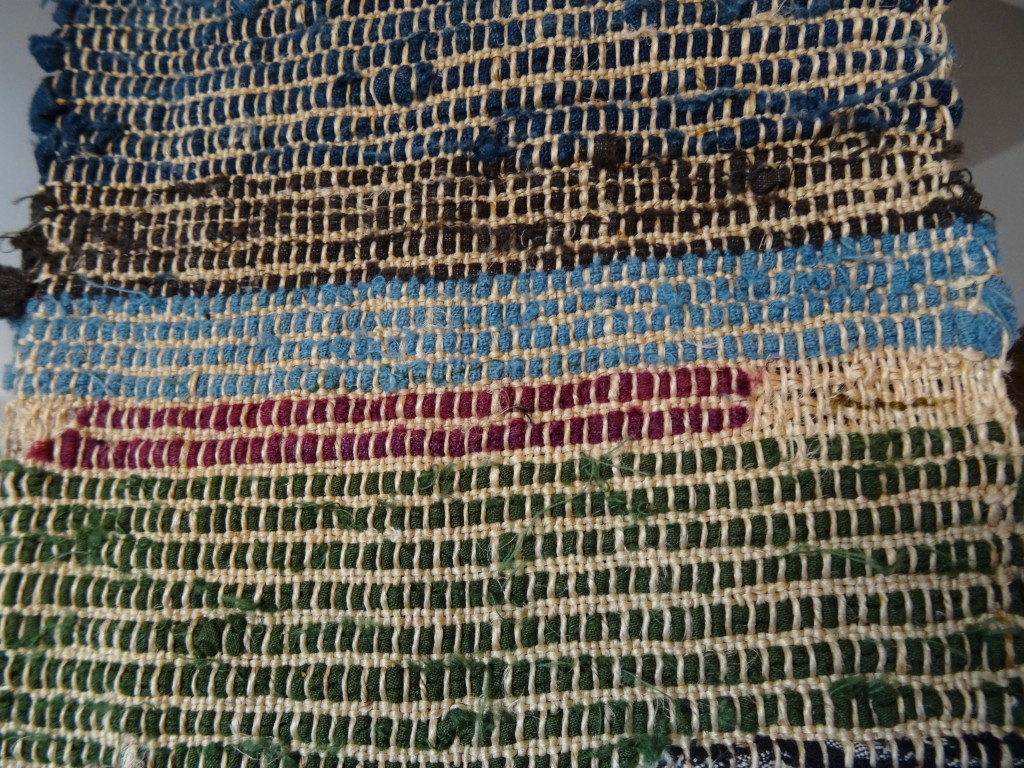
Most of the sodenashi is made from various shades of indigo-dyed cotton (also, in this case, quite a bit of green), but here the weaver obviously had rare access to a bit of magenta cloth. Rather than taking this length and using it in one row, the weaver used extra hemp fiber from the warp to fill in the edges so the magenta would appear in a larger vertical area. Doing this took extra effort and one can easily imagine the weaver’s thought process as she made this design decision.
Even more extreme are these two examples of color usage.
The purple (two views):
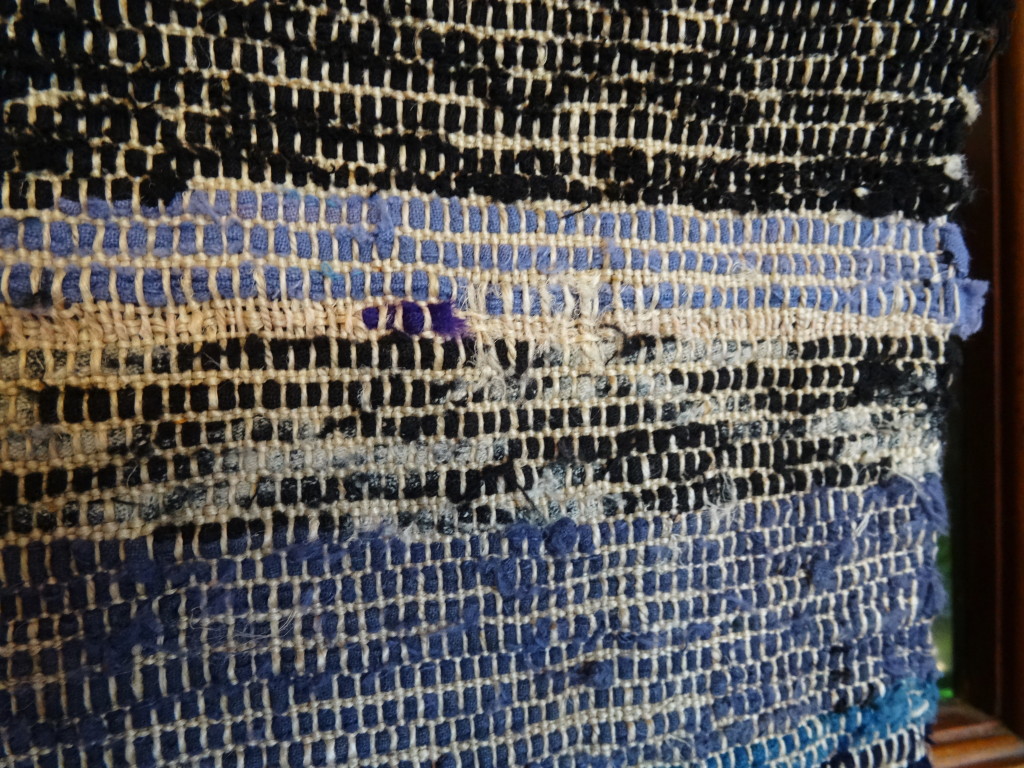
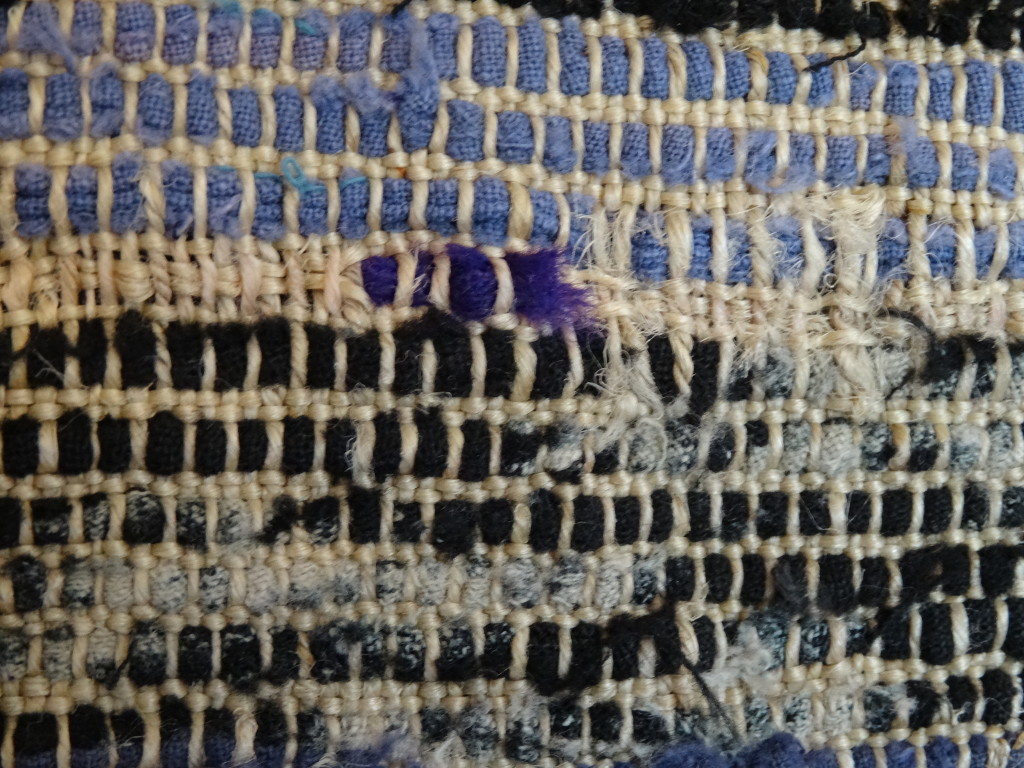
The purple was so favored by this weaver that she put only a tiny scrap in an entire row of hemp. As this is the only place in the whole piece where this fabric appears, one surmises that this is all she had.
And the orange (two views):
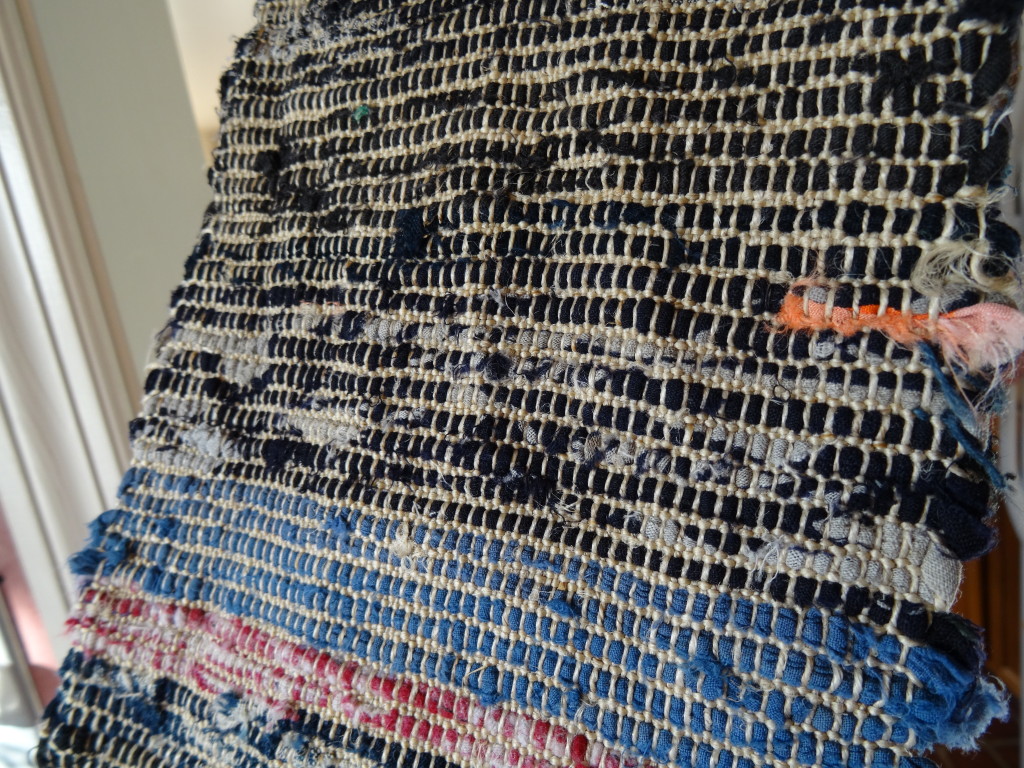
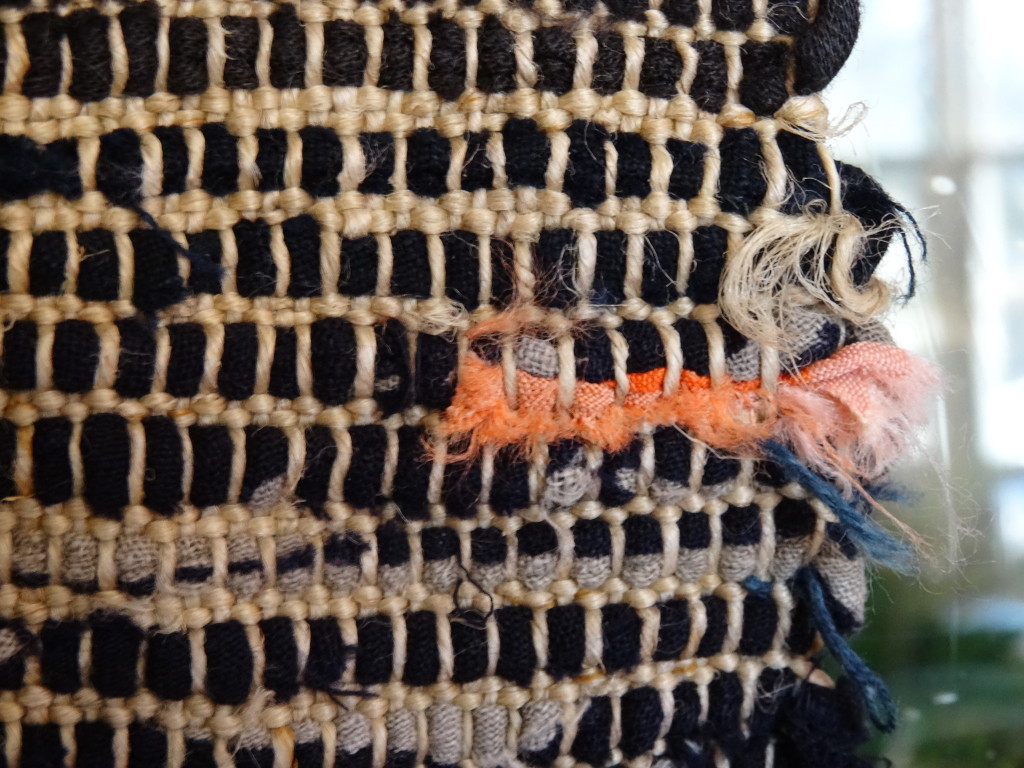
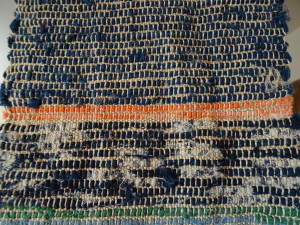
The orange is, quixotically, used right on the edge and laid in as supplementary weft. It was probably a scrap left over from the larger orange section (at right).
(Interestingly, these details tell us which side of the weaving is the ‘right’ side (facing up on the loom) as well as in what direction the weaving was done. The inlaid scraps would have been placed on the ‘right’ side and the larger orange section would have preceded the use of the scrap later on in the piece.)
What does all of this have to do with how we live today? First, it provides a practical example of how the old can be made new again. Not all used textiles are suitable to be re-worn as-is, and although people are doing extremely clever things (like this or this or this) with refashioning old clothing, not everything is a successful candidate. Sometimes it is the print on the fabric that is the deal-breaker: so ugly or out-of-date that it will always scream of the decade of its origins (desirable to some, but not to all). Sometimes it is the condition of the fabric. It may be riddled with tiny holes or tears, stained, ripped to shreds, or otherwise infirm. Fortunately, as all rag rug weavers well know, ugly prints make fabulous rags. The magic of tearing and weaving transforms hideous prints into wonderful bits of color peeping from behind staid warp threads.
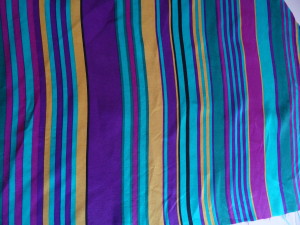
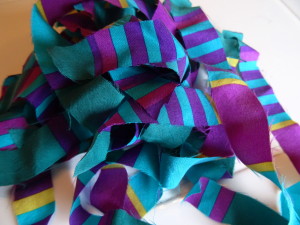
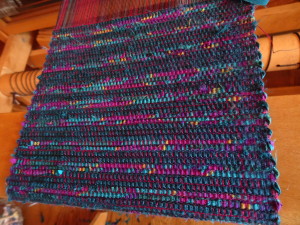 …..to new cloth–a dramatic improvement!
…..to new cloth–a dramatic improvement!
Second, sakiori shows us that what we weave from those ugly old fabrics does not have to become a rag rug, chair seat, place mat, or other household item. Instead, we can consider the possibility of making new garments from the old. These new garments, rather than trying to re-create or imitate the type of garment from which it was made, can be an entirely new sort of garment, suitable to the needs of the wearer, and with a style and beauty all their own. This is accomplished by using rags taken from the finest available materials. In the case of the Japanese peasant weaver, that was cotton, and the type of garment they needed was something warm and heavy enough for hard work. Today, both the quality of available materials and the type of garment desired have changed, but the principle remains the same.
And finally, sakiori is the embodiment of an ethic of conservation and recycling that says that what we make from old things does not have to be inferior, quirky or obvious. From rags, we can make new clothing that anyone could wear. It can be dressy enough for a formal occasion or casual enough to pair with jeans. It can be good-looking enough to stand out from the crowd, but conventional enough that people are surprised to learn it is made from recycled materials. In short, it is recycling for everyone.
